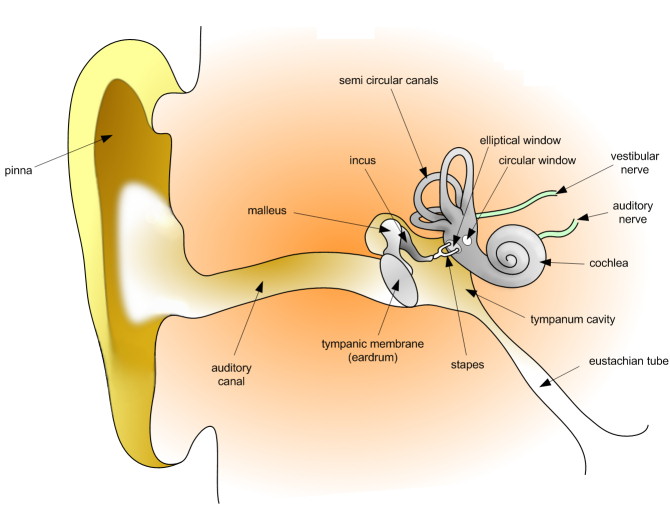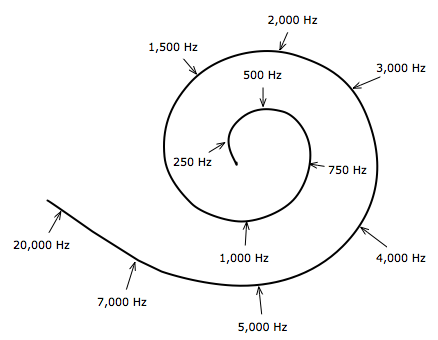The ear responds to vibrations (sound waves) traveling through the air. Sound waves enter the outer ear, travels along the auditory canal and causes the ear drum to vibrate. The vibrations of the eardrum are mechanically amplified by the lever actions of three small connected bones (the maleus, incus and stapes) collectively called the ossicles.

The amplified sound energy vibrates the elliptical window of the snail-shaped cochlea. These vibrations agitate the fluid that fills the cochlea, which in turn causes deflections of a set of approximately 20,000 hairs. The hairs in different parts of the cochlea respond to different frequencies of sound. Higher frequency sounds stimulate the hairs closest to the elliptical window. Low frequency sounds stimulate that hairs at the far end of the coil of the cochlea.

The movements of the hairs trigger nerve impulses that travel through the auditory nerve to the auditory cortex in the brain. In effect, the ear operates as a spectrum analyzer, sensing the amplitude of a range of frequencies in the incoming sound. The hearing system can distinguish around 1500 different pitches. The cochlea serves to translate temporal information about the frequencies of sound that are entering the ear into spatial information expressed along the length of the cochlea.